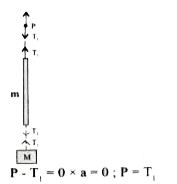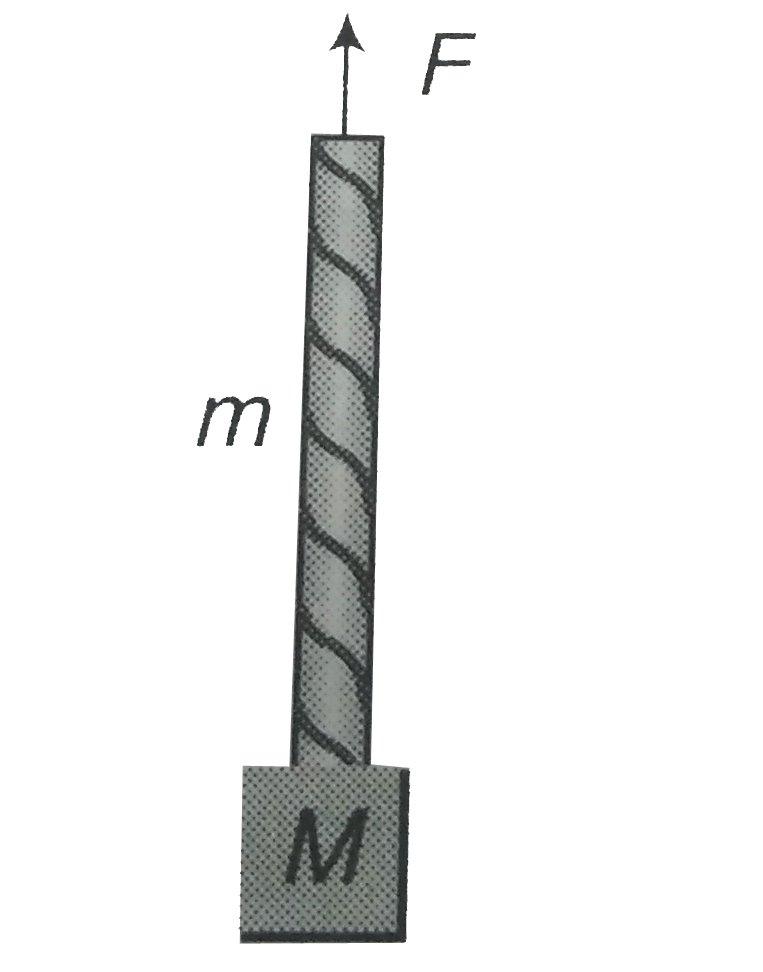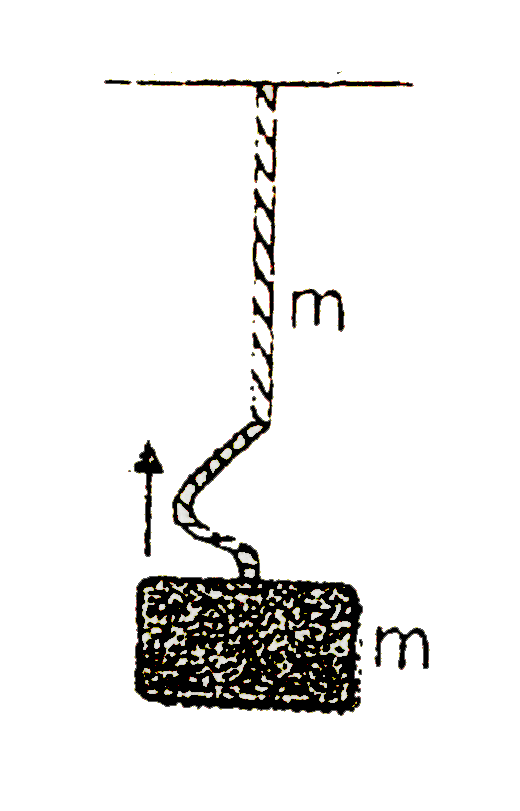A block of mass M is attached to the lower end of a vertical rope of mass m. An upward force Pacts on the upper end of the rope. The system is free to move. The force exerted by the rope on the block is
In all cases
Only if the rope is uniform
In gravity-free space only
Only if Pgt(M+m)g
The correct Answer is:D

P-T =0×a=0,P=T1
T1−mg−T2=ma,T2−Mg=Ma,P−(M+m)g=(M+m)a∴=P−(M+m)gM+m<br>T2=Mg+Ma=MPM+m
Only if P > (M + m) g, one can have. acceleration and this derivation will be valid.
Similar Questions
A block of mass M is pulled along a horizontal frictionless surface by a rope of mass m. If a force P is applied at the free end of the rope, the force exerted by the rope on the block will be
View SolutionA block of mass M is pulled along a horizontal frictionless surface by a rope of mass m. If a force P is applied at the free end of the rope , the force exerted by the rope on the block .
View Solution
Knowledge Check
A block of mass M is attached to the lower end of a vertical rope of mass m. An upward force P acts on the upper end of the rope. The system is free to move. The force exerted by the rope on the block is PMM+m
Ain all casesBonly if the rope is uniformCin gravity-free space onlyDonly if P>(Mm)gConsider the situation as shown in the figure. The system is free to move.

The force by the rope on the block is FM/(M+m)AOnly if the rope is uniformBin gravity free spaceConly if F>(M+m)gDin all casesA block of mass M is pulled along a horizontal frictionless surface by a rope of mass m. If a force P is applied at the free end of the rope, the force exerted by the rope on the block is
APm(M+m)BPm(M−m)CPDPM(M+m)
A block of mass M is pulled along a horizontal frictionless surface by a rope of mass m. If a force P is applied at the free end of the rope, the force exerted by the rope on the block is
View SolutionA uniform rope of elngth l and mass m hangs vertically from a rigid support. A block of mass m is attached to the free end of the rope. A transverse pulse of wavelength λ is produced at the lower end of the rope. The wavelength of the pulse, when it reaches the top of the rope. is aλ. Find a2

View SolutionA uniform rope of elngth l and mass m hangs vertically from a rigid support. A block of mass m is attached to the free end of the rope. A transverse pulse of wavelength λ is produced at the lower end of the rope. The wavelength of the pulse, when it reaches the top of the rope. is aλ. Find a2

View SolutionA block of mass Mis pulled vertically upward through a rope of mass m by applying force F on one end of the rope. What force does the rope exert on the block?
View SolutionA block of mass M is pulled along a horizontal frictionless surface by a rope of mass m. If a force P is applied at the free end of the rope, the force exerted by the rope on the block is
View Solution
